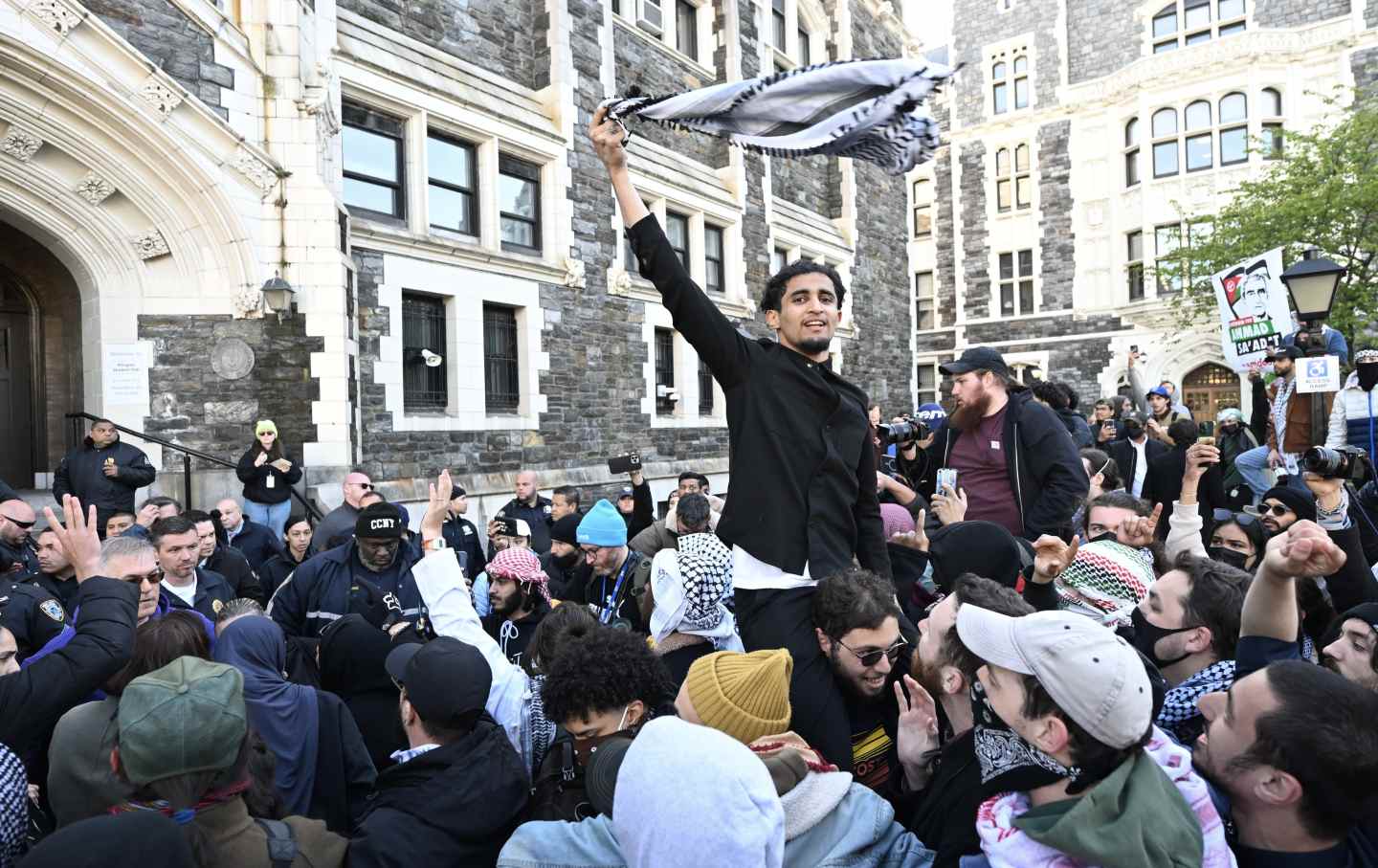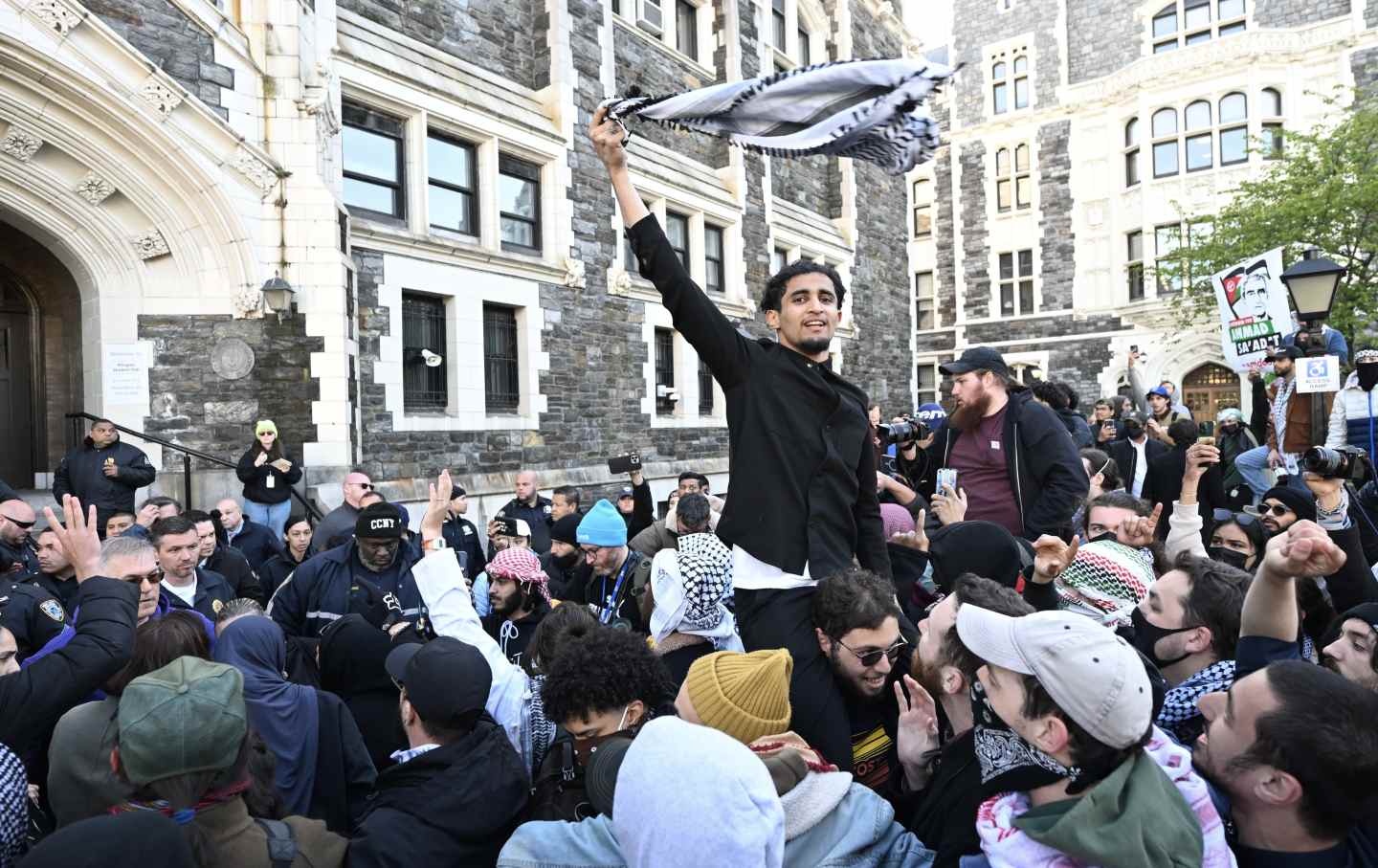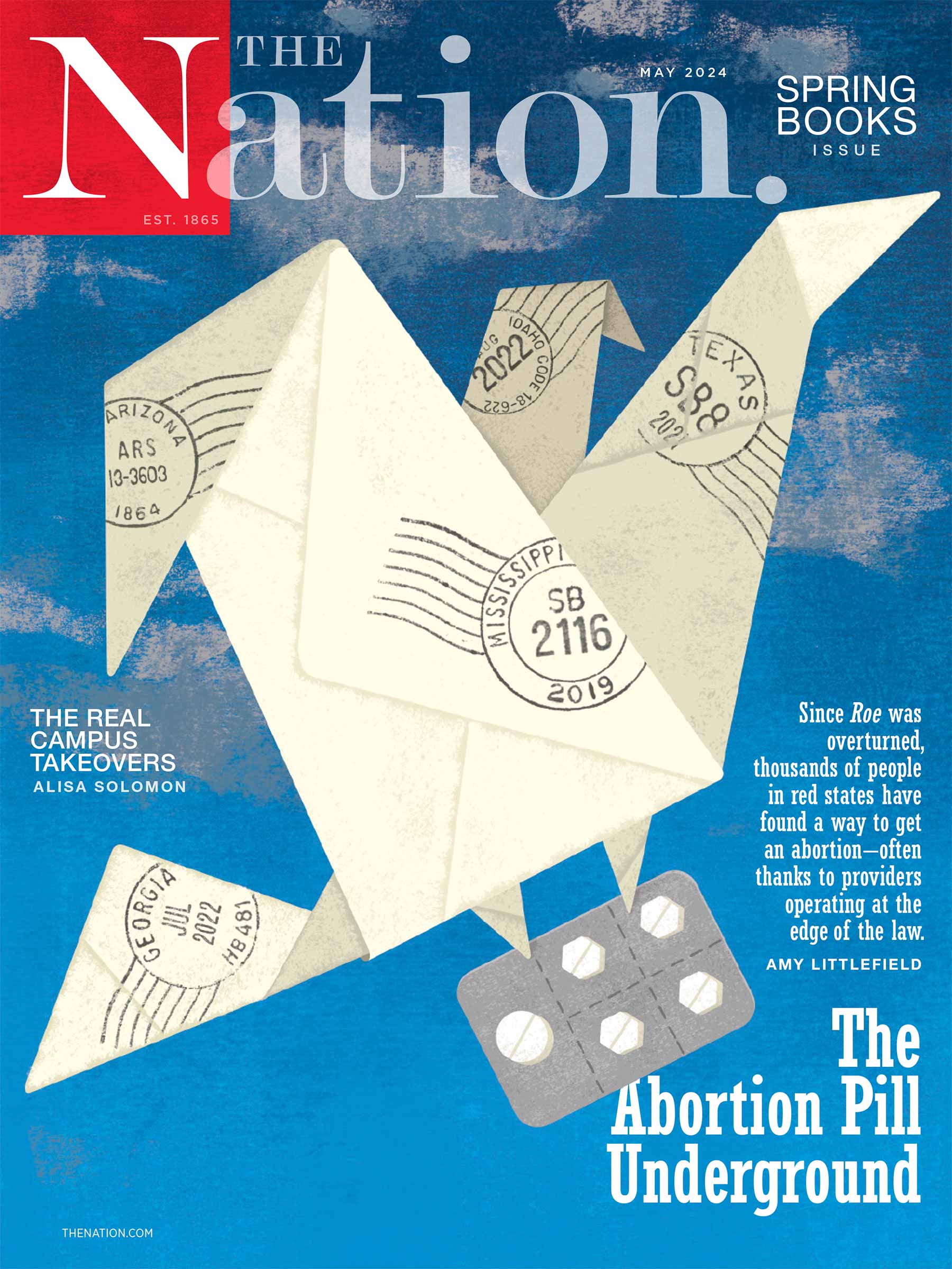
[ad_1]
Why are the City College protesters being charged with felonies that could land them up to nine years in jail—while Columbia students are facing much lighter sentences?

In the early hours of May 1, teams of police in riot gear, brandishing mace and tasers, stormed the neo-Gothic Harlem campus of the City College of New York to remove a Gaza solidarity encampment. Earlier in the evening and about 20 blocks south, officers had removed protesters from Columbia University’s Hamilton Hall, which students had occupied in the early hours of the previous morning. 170 people were arrested at City College, and 112 at Columbia. More than 2,000 people have been arrested protesting against Israel on campuses nationwide in the last month.
The events on both campuses seemed to be part and parcel of the same story, but as the arraignments concluded on the afternoon of May 2, it turned out that the charges against the two sets of protesters were very different. Forty-six protesters at Columbia were charged with criminal trespass, a class B misdemeanor, which carries a a maximum sentence of 90 days in prison; 28 protesters at City College were charged with burglary in the third degree, a class D felony that can lead to sentences of up to seven years in prison. Other charges, according to a City Hall press release, included assault on a police officer, obstructing governmental administration, criminal mischief, resisting arrest, trespassing, and disorderly conduct.
Columbia is an Ivy League school where students (or their parents) can pay over $68,000 a year for tuition alone, whereas at City College, which is part of the City University of New York (CUNY) system, students pay just over $7,000. At CUNY, the student body is “overwhelmingly working class, overwhelmingly first generation,” Celina Su, a professor of political science at the CUNY Graduate Center who protested against the use of police force in the wake of the arrests, told me. “These are people with families, deeply embedded in local communities, used to talking with students very much unlike themselves in class, working multiple jobs to pay high rents and put food on the table, sharing concerns over the death tolls in Gaza, and their concerns over their university’s responses to—and literal investments in—the suffering.”
This week, over five hundred CUNY faculty signed an open letter to the university’s chancellor, Félix V. Matos Rodríguez. They blamed the university administration for the disparity in punishment:
Columbia students’ charges were lowered; CCNY students’ were not. Lawyers observing the cases report that CCNY was especially slow to release relevant footage to the courts. This racialized mistreatment will undoubtedly continue through all future stages of the criminal legal system, from judgment to penalties.
The letter writers note that there was no ultimatum to vacate the encampment by Tuesday evening from the university administration, and that the university administration “violated” their own ultimatum by sending police in before it had expired. People involved with the protests say that more vulnerable students from lower income and minority backgrounds had planned to leave the encampment when the ultimatum was set to expire, on Wednesday, but that they were caught up in the police action because it came before the official deadline. City College president Vincent Boudreau was not available for comment for this story, but he told a Town Hall of students and faculty that he regrets not breaking up the encampment earlier. (Boudreau himself was arrested several times while protesting for divestment in apartheid South Africa as a student at Cornell in the 1980s.)
The district attorney’s office charged the students after reviewing evidence following the arrests. The criminal complaints indicate that more evidence was initially available to prosecutors in the case of the City College arrests than during those at Columbia. “The defendants were part of a group of approximately 22 people who unlawfully gained entry into a City College building and erected barricades to prevent police from entering the building,” the arraignment record states. “In addition to blocking doors with furniture and other items, this group also threw items at responding officers, such as a chair and a garbage can, physically interfered with officers ability to get past the barricades, spray painted surveillance camera lenses, and attempted to strike at least one officer with a keyboard.”
The sets of charges against the protesters are “discretionary charging decisions,” explained Jennvine Wong, a supervising attorney at the Legal Aid Society. These can change later. New York District Attorney Alvin Bragg has promised to “look at each individual case” and review evidence, including police body cam footage. (The DA’s office declined to comment in response to questions from The Nation.) But still, Wong said, the reason for the disparity in charging “is quite unclear, since their behaviour seems to be the same.”
Wong said that the disparities in charges raise questions. “I think it’s a question for many folks who are hearing about these charges—why is it that the public school kids got the more serious charges, as opposed to the private school kids?” she said, although she could not speak to prosecutorial decisions in this specific case. “In my experience, as a public defender, seeing a disparity in charges that reflects the socioeconomic class divide—that’s not uncommon.” The DA’s office has said it will continue to investigate, and that the charges might change.
Current Issue

The police violence at City College was more intense than at Columbia (although one police office did discharge a firearm during the operation to retake Hamilton Hall). There are reports of numerous students and faculty members being tasered and pepper-sprayed by police officers on the Harlem campus. Two students had their teeth smashed and one undergraduate’s ankle was broken. (The NYPD’s press office declined to comment, but referred me to a press conference given by Mayor Eric L. Adams and Police Commissioner Edward A. Caban the morning after the arrests in which Adams blamed a global “movement to radicalize young people” for the violence.) The City College administration was unavailable to comment at time of publication.
The protesters pointed out the dangers of unleashing law enforcement against a student body populated by minorities. “We know that CUNY unleashed cops onto campus with the full knowledge of our demographics, which are majority Black, brown, and working class, and with the full knowledge of the disparities that Black, brown, and working-class people already face under the system,” Musabika Nabiha, a CUNY alum who has been involved in Palestine organizing with the current students, told me. As for the heavy charges, Nabiha said, “This is just completely unconscionable. This would ruin the lives of these protesters in response to their righteous protest for Palestinian liberation.”
Celina Su noted that CUNY is funded by the City of New York, which has undergone a series of budget cuts under Mayor Adams’s administration, whereas the police force had not been cut. She noted the increasing militarization of the NYPD and the use of the Strategic Response Group (SRG) to raid the encampment: “It was created as a counter-terrorism unit and treats protesters as terrorists.” (Last year, as part of a court settlement arising from their often violent handling of the 2020 Black Lives Matter protests, the NYPD agreed that the unit would not be used against protesters without probable cause for arrest.)
The letter from City College faculty notes the “particularly repressive” treatment by the SRG, and questions why communications from the university have cast students as worth of punishment and not of protection and education. “Our young people are the moral conscience of our society,” the letter reads. “The charges must be dropped.”
The disparity of charges does not seem to have affected what Nabiha describes as “solidarity” between the Columbia and City College protesters. “Both of these campuses and communities are united in organizing for free and liberated Palestine, for people’s universities, for investing in the communities in which we are embedded in,” she said. “CUNY must pressure the DA to drop the charges, must fully refuse to participate in the prosecutions. CUNY uplifts black and brown students and alumni in its DEI [diversity, equity, and inclusion] initiatives, they boast the fact that they’re the largest Black and brown public university system in the country. If they really care about the safety of their students and about uplifting minoritized communities, they need to refuse to participate in this prosecution.”
Thank you for reading The Nation!
We hope you enjoyed the story you just read, just one of the many incisive, deeply reported articles we publish daily. Now more than ever, we need fearless journalism that moves the needle on important issues, uncovers malfeasance and corruption, and uplifts voices and perspectives that often go unheard in mainstream media.
Donate right now and help us hold the powerful accountable, shine a light on issues that would otherwise be swept under the rug, and build a more just and equitable future.
For nearly 160 years, The Nation has stood for truth, justice, and moral clarity. As a reader-supported publication, we are not beholden to the whims of advertisers or a corporate owner. But it does take financial resources to report on stories that may take weeks or months to investigate, thoroughly edit and fact-check articles, and get our stories to readers like you.
Donate today and stand with us for a better future. Thank you for being a supporter of independent journalism.
Thank you for your generosity.
[ad_2]